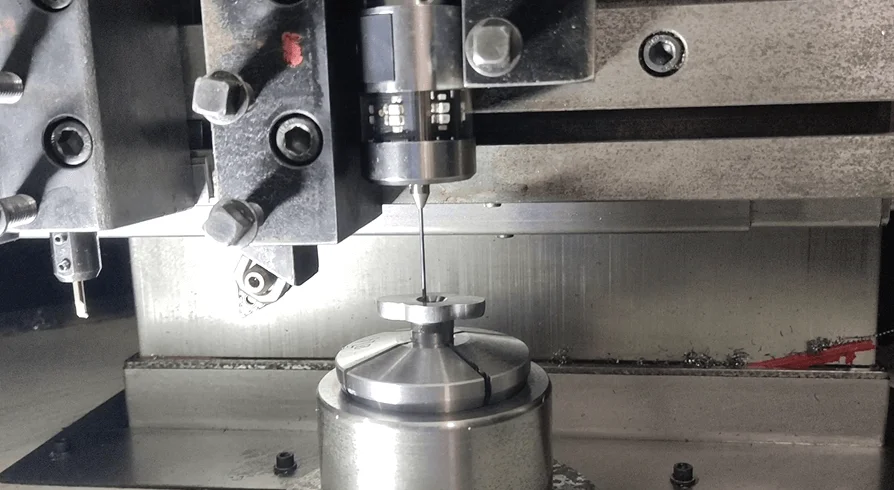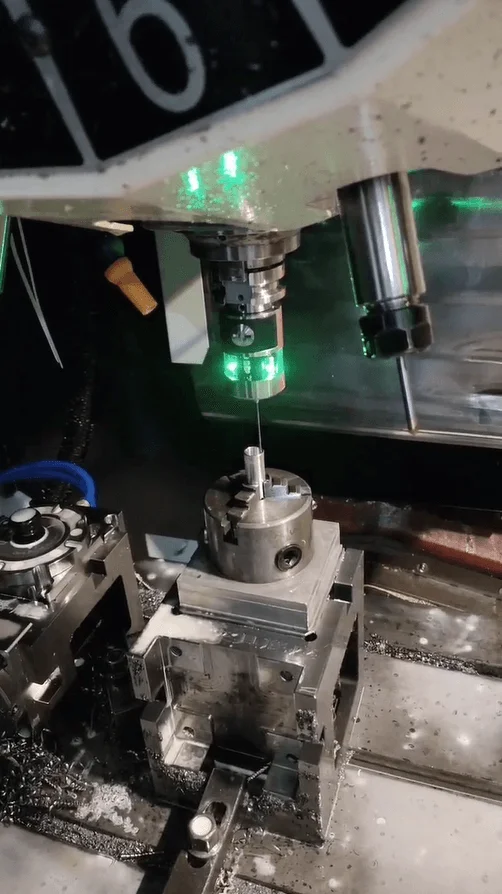Email: katrina@qidumetro.com Phone: (+86) 134 1323 8643
Manufacturing Revolution: The Unsung Hero – Standard Accuracy Machine Tool Touch Probes
The manufacturing world is in a whirlwind of change. Fueled by automation, digitalization, and the relentless pursuit of efficiency, the industry is constantly seeking ways to improve production processes, elevate product quality, and tighten its belt. In this dynamic landscape, an often-underestimated yet powerful tool – the standard accuracy machine tool touch probe – is playing a critical role.
The Impact of Unsung Heroes: Standard Accuracy Machine Tool Touch Probes
Unassuming devices mounted on CNC machines or machining centers, standard accuracy machine tool touch probes utilize various technologies like mechanical, electrical, and optical sensors to physically contact the workpiece and gather precise dimensional data. While frequently overlooked, these probes are quietly revolutionizing how manufacturers approach production. By providing real-time feedback on a part’s location, size, and shape, standard accuracy machine tool touch probes are ushering in a new era of precision, efficiency, and control in manufacturing.
The Evolution of Manufacturing Technology
Traditionally, manufacturing relied on manual processes and rudimentary measuring tools. The arrival of CNC machines marked a significant leap forward, introducing computer-controlled automation. However, even with CNC technology, verifying part dimensions often involved manual intervention and dedicated measuring equipment. This approach was time-consuming, prone to human error, and limited the possibility of continuous in-process inspection.
Setting the Stage for Innovation
The development of standard accuracy machine tool touch probes addressed these limitations. By seamlessly integrating with CNC machines, these probes enabled automated part measurement within the machining process itself. This innovation paved the way for a more streamlined, data-driven approach to manufacturing, setting the stage for a wave of further advancements.
The Significance of standard accuracy machine tool touch probes
The Power of Precision in Manufacturing
Precision is the cornerstone of successful manufacturing. Inaccurate machining can lead to a domino effect of problems, including assembly difficulties, performance issues, and even product failures. standard accuracy machine tool touch probes provide a reliable and consistent way to ensure parts meet the required tolerances. By capturing precise dimensional data throughout the machining process, these probes allow for real-time adjustments and eliminate the need for manual post-machining inspection.
Benefits of Implementing Touch Probes in Production
Integrating standard accuracy machine tool touch probes into production processes offers a multitude of advantages:
- Reduced Scrap Rates: By identifying and correcting machining errors in real-time, touch probes significantly reduce the number of parts discarded. This translates to cost savings on materials and labor.
- Enhanced Quality Control: In-process inspection with touch probes guarantees consistent quality throughout production runs. This minimizes the risk of defective parts reaching final assembly.
- Increased Production Efficiency: Touch probes automate part measurement, eliminating the need for manual intervention and setup times. This leads to faster production cycles and improved overall throughput.
- Improved Operator Productivity: By automating repetitive tasks, touch probes free up operators to focus on higher-value activities such as programming, machine maintenance, and quality control analysis.
Enhancing Quality Control with Standard Accuracy Probes
standard accuracy machine tool touch probes offer a significant advantage over traditional quality control methods:
- Comprehensive Data Collection: Touch probes capture a wealth of data points across the entire workpiece, providing a more complete picture of its geometry and dimensions.
- Reduced Subjectivity: Traditional methods often rely on visual inspection or manual measurements, which can be subjective and prone to human error. Touch probes provide objective and repeatable data.
- Improved Traceability: Data collected by touch probes can be easily documented and archived, creating a complete audit trail for each part. This enhances traceability and facilitates faster root cause analysis in case of any issues.
Transforming Manufacturing with Touch Probes
Revolutionizing Automation and Efficiency
Touch probes are at the forefront of the automation revolution in manufacturing. By automating in-process inspection, they enable “lights-out” manufacturing scenarios, where machines can operate unattended during off-peak hours.
Improving Accuracy and Consistency in Machining
The ability to collect real-time data on part dimensions allows for continuous adjustments to the machining process. This ensures consistent accuracy throughout production runs, minimizing the risk of dimensional variations and improving overall part quality.
Streamlining Production for Future Industry Needs
standard accuracy machine tool touch probes are essential for streamlining production to meet the demands of future industries. As industries like aerospace and medical devices continue to push the boundaries of precision, the need for accurate and reliable part manufacturing will only intensify. Touch probes provide a future-proof solution for these evolving needs.
Embracing the Future: Trends and Developments
The capabilities of standard accuracy machine tool touch probes are constantly evolving, driven by advancements in technology:
Integration of AI and IoT in Touch Probe Systems
The integration of artificial intelligence (AI) and the Internet of Things (IoT) in touch probe systems holds immense potential for the future of manufacturing. AI algorithms can analyze data collected by touch probes in real-time, allowing for predictive maintenance, process optimization, and even automated error correction. Additionally, IoT connectivity enables remote monitoring and data sharing, facilitating collaboration and centralized control within a distributed manufacturing environment.
Sustainable Manufacturing Practices with Standard Accuracy Probes
standard accuracy machine tool touch probes can contribute to more sustainable manufacturing practices. By minimizing scrap rates and ensuring efficient material utilization, they reduce waste generation. Additionally, the ability to optimize machining processes with real-time data can lead to lower energy consumption.
Enhancing Predictive Maintenance through Proactive Monitoring
Touch probes can be used for proactive monitoring of machine tool health. By detecting subtle changes in probe trigger forces or stylus deflection, they can identify potential wear and tear before they lead to major breakdowns. This predictive maintenance approach allows for preventative repairs and minimizes downtime, optimizing machine utilization and production efficiency.
FAQ
How Do standard accuracy machine tool touch probes Work?
There are different types of standard accuracy touch probes, each utilizing a distinct sensing mechanism:
- Mechanical Touch Probes: These probes activate a switch when the stylus physically contacts the workpiece.
- Electrical Touch Probes: These probes detect a change in electrical conductivity upon contact with the workpiece.
- Optical Touch Probes: These probes use a light source and sensor to detect the position of the stylus tip relative to the workpiece.
Regardless of the technology employed, all standard accuracy probes communicate with the CNC machine control unit, capturing data that is used to verify part dimensions and adjust machining processes as needed.
What Are the Potential Challenges in Implementing Touch Probes?
While the benefits of standard accuracy touch probes are undeniable, some potential challenges exist:
- Initial Investment Costs: Integrating touch probes into existing machines requires an upfront investment. However, the long-term savings on scrap reduction, improved quality control, and increased efficiency typically outweigh the initial cost.
- Programming Complexity: Utilizing touch probes effectively requires additional programming expertise to integrate probe routines into CNC machining programs.
- Workpiece Material Compatibility: Not all touch probe technologies are suitable for all types of materials. Careful selection of the appropriate probe type is crucial for accurate and reliable operation.
How Can Companies Benefit from Investing in Advanced Probe Technology?
The benefits of investing in advanced probe technology are substantial:
- Enhanced Capabilities: Advanced probes offer features like multi-axis probing, on-machine tool calibration, and broken tool detection, further expanding the possibilities for automated inspection and process control.
- Improved Data Collection: Advanced probes can capture even more detailed data points, providing a more comprehensive picture of part geometry and enabling even tighter tolerances.
- Future-Proof Investment: By investing in advanced probe technology, companies ensure they are well-positioned to adapt to the evolving demands of the manufacturing landscape.
Conclusion
Standard accuracy machine tool touch probes are more than just simple measuring tools. They are powerful drivers of innovation in manufacturing. By fostering precision, efficiency, and automation, touch probes are helping to shape the future of the industry. As technology continues to advance, the capabilities of touch probes will undoubtedly expand further, driving even greater levels of efficiency, quality control, and sustainability in the years to come.
Katrina
Mechanical Sales Engineer with 10+ years of experience in the manufacturing industry.Skilled in developing and executing sales strategies, building relationships with customers, and closing deals. Proficient in a variety of sales and marketing tools, including CRM software, lead generation tools, and social media. I'm able to work independently and as part of a team to meet sales goals and objectives. Dedicated to continuous improvement and learning new sales techniques.


